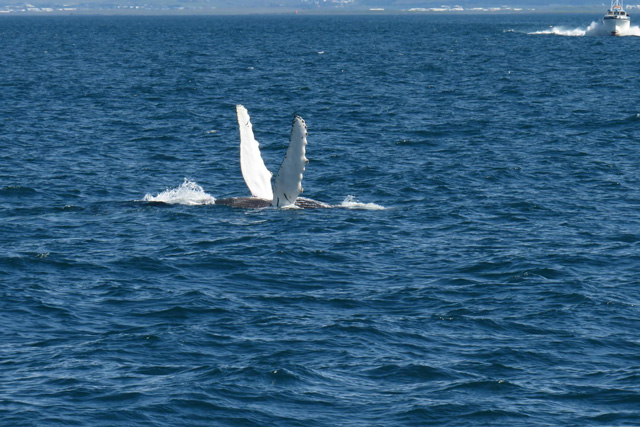When I first learned about whales, I was amazed at how much they communicate and interact with each other. Whales aren’t just majestic; they’re also incredibly social and intelligent. From their songs to their playful behaviors, every action tells a story. And, actually seeing their behaviors for yourself and learning more about whales in general is a great way to dispel the myths I think we all have heard about whales.
Let me take you on a journey to understand the fascinating world of whale behavior and communication!
Key Takeaways
- From breaching and spyhopping to tail slapping and bubble net feeding, whales display a fascinating array of behaviors that serve various purposes, including communication, social interaction, and hunting.
- Studying whale behavior helps scientists understand their social structures, feeding habits, and the threats they face, enabling them to develop effective conservation strategies.
- Whales communicate through a combination of vocalizations, such as songs and clicks, and body language, including breaching, tail slapping, and subtle movements.
- Witnessing these magnificent creatures in their natural habitat provides a profound connection with nature and fosters a deeper appreciation for their intelligence, social complexity, and the importance of their conservation.
The Importance of Understanding Whale Behavior
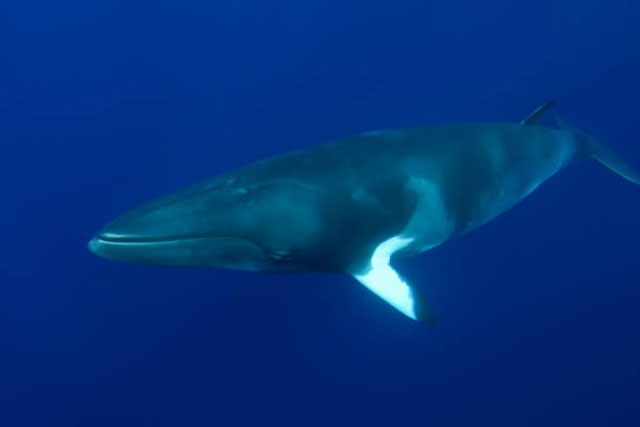
Learning about whale behavior and communication isn’t just fascinating—it’s also crucial for protecting them. Whales face many threats, including ship collisions, noise pollution, and habitat destruction.
By studying whale behavior, scientists can gain valuable insights into their migration patterns, feeding habits, and social interactions. This knowledge is essential for developing effective conservation strategies, such as establishing marine protected areas and minimizing human impacts on their habitats.
Fun Fact!
Did you know some whales, like orcas, pass down knowledge through generations? This includes hunting techniques and even certain vocalizations, making them some of the most intelligent animals on Earth!
Understanding how whales communicate through sounds and other signals can also help researchers identify and mitigate the effects of noise pollution, which can disrupt their feeding, mating, and navigation. Ultimately, by deepening our understanding of whale behavior, we can play a more active role in safeguarding these magnificent creatures for generations to come.
Whale Behavior You Might See in Maui
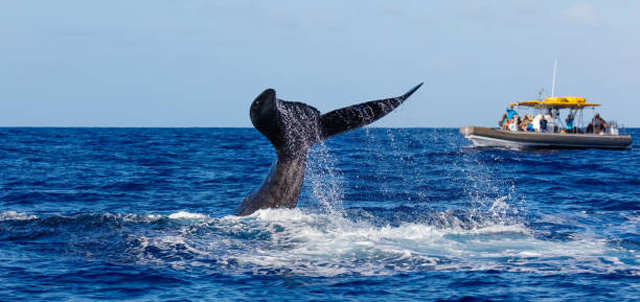
Watching whales isn’t just about seeing them swim. The different types of whale behavior you might see are just as thrilling! I’ll share a few behaviors for you to keep an eye out for.
- Breaching: This spectacular aerial display, where a whale leaps entirely out of the water, is a sight to behold. While the exact reasons remain a subject of scientific inquiry, breaching might serve various purposes, such as:
- Communication: Signaling to other whales in the pod or even across vast distances.
- Social Interaction: Showing off, attracting mates, or establishing dominance within a social group.
- Parasite Removal: Shaking off pesky barnacles or parasites clinging to their skin.
- Spyhopping: This curious behavior involves the whale raising its head vertically out of the water, allowing it to survey its surroundings. It’s as if they’re taking a peek at the world above the surface, perhaps checking for potential threats or simply enjoying the view.
- Tail Slapping: A powerful display where the whale forcefully slaps its tail on the water’s surface, creating a loud, resounding boom. This behavior could have several functions:
- Communication: Sending a signal to other whales, either as a warning or a greeting.
- Disorientation: Startling prey or deterring predators.
- Social Interaction: A playful display within a pod.
Fun Fact!
Some whale sounds can travel over 500 miles in the ocean. It’s like talking to someone from New York City to Raleigh, North Carolina without a phone!
Whale Pods and Group Behavior
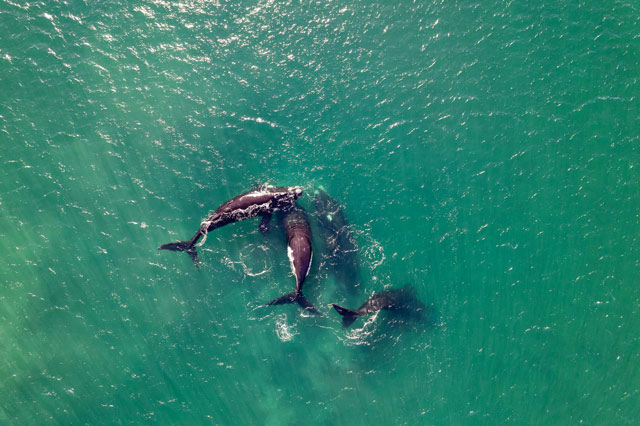
Whales are social animals, and many live in groups called pods. Pods can range from just a few whales to over a dozen, depending on the species. Within these groups, fascinating whale behavior emerges. For example, some species exhibit cooperative hunting strategies, where members of the pod work together to corral fish into a tight school before feeding. Others demonstrate remarkable altruism, assisting injured or distressed individuals within their pod.
Whale behavior within pods also includes intricate social interactions, such as the formation of alliances between individuals for mating or defense. These alliances can be complex and long-lasting, demonstrating the sophisticated social structures that govern pod dynamics.
Some pods, like those of orcas (technically a type of dolphin), have incredibly tight family bonds and communicate with unique sounds that are like a family dialect. These distinct vocalizations further emphasize the complex social structures and unique whale behavior exhibited by different pods. By observing these intricate social interactions and cooperative behaviors, scientists gain valuable insights into the social complexities and evolutionary adaptations of these magnificent creatures.
Pro Tip!
When watching whales in Maui, look for pod dynamics. You might see a mother and calf swimming together or a group working as a team to hunt for food.
Bubble Nets and Other Feeding Behaviors
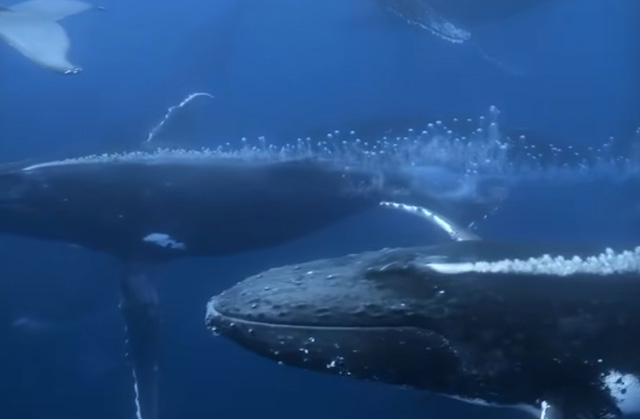
Have you ever heard of bubble net feeding? It’s a really cool whale behavior to see. Unfortunately, you will only VERY rarely see it happen in the waters of Maui. It consists of humpbacks working together to blow bubbles in a circular pattern, trapping schools of fish inside. Then, they swim up through the center with their mouths wide open for a feast.
Whales also use their throat grooves to expand their mouths when feeding. This allows them to take in a huge amount of water, which they then filter to capture krill or fish. It’s like having built-in fishing nets!
Pro Tip!
A humpback whale’s throat grooves can expand to hold up to 15,000 gallons of water—enough to fill a small swimming pool!
How Do Whales Communicate?
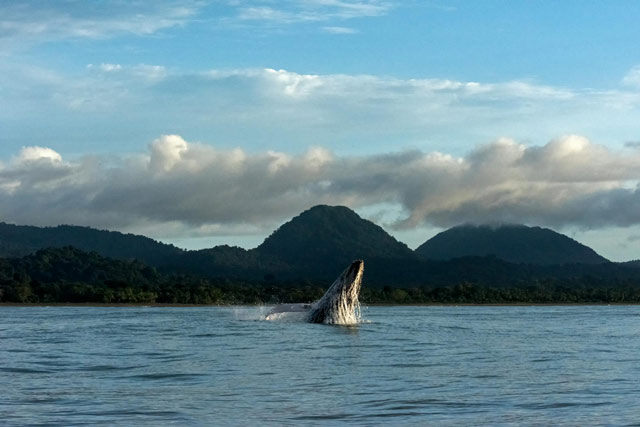
Whales use a mix of sounds, body movements, and behaviors to communicate. Some species, like humpbacks, are famous for their hauntingly beautiful songs, while others, like sperm whales, use a series of clicks. These sounds travel long distances underwater, making it easier for whales to stay in touch, even when separated by miles.
Whale songs are especially fascinating. Male humpback whales sing complex songs that can last for up to 20 minutes. These songs might be a way to attract mates or mark territory, though scientists are still figuring it out.
The Science of Whale Songs and Sounds
One of the most fascinating aspects of whale behavior is their use of sound. Each species has its own unique way of vocalizing:
- Humpbacks sing melodic songs.
- Sperm whales click loudly, which helps with echolocation.
- Blue whales produce deep, low-frequency sounds that are almost impossible for humans to hear without special equipment.
Echolocation is especially important for whales in deep or murky waters. By producing clicks and listening to the echoes, whales can map their surroundings and locate prey.
Body Language and Interaction
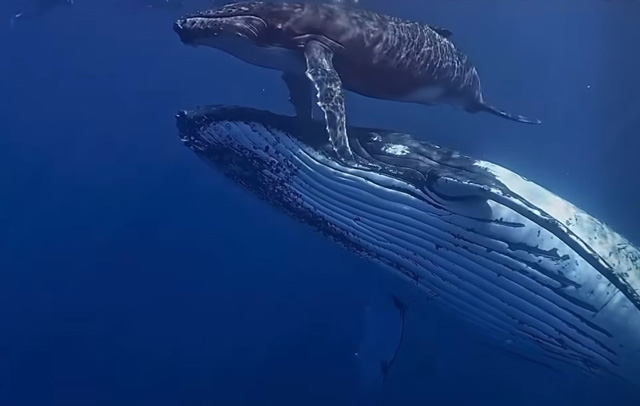
In addition to sounds, whales use body language to communicate. Breaching, tail slapping, and even rolling can send messages to other whales. Sometimes, these behaviors are playful, while other times they’re serious signals to warn off threats or attract mates.
Watching these whale behaviors in person gives you a whole new appreciation for their intelligence and social bonds.
Pro Tip!
Bring a notebook or a wildlife guide on your whale watching trip. Jotting down behaviors you observe can help you remember the experience and deepen your understanding of whales.
Final Thoughts
Whales are more than just ocean giants—they’re highly social, intelligent animals with complex behaviors and communication methods. Watching them in Maui is a chance to connect with nature in a profound way. Whether you’re listening to their songs, watching them breach, or marveling at their teamwork, you’ll walk away with a deeper appreciation for these amazing creatures.

